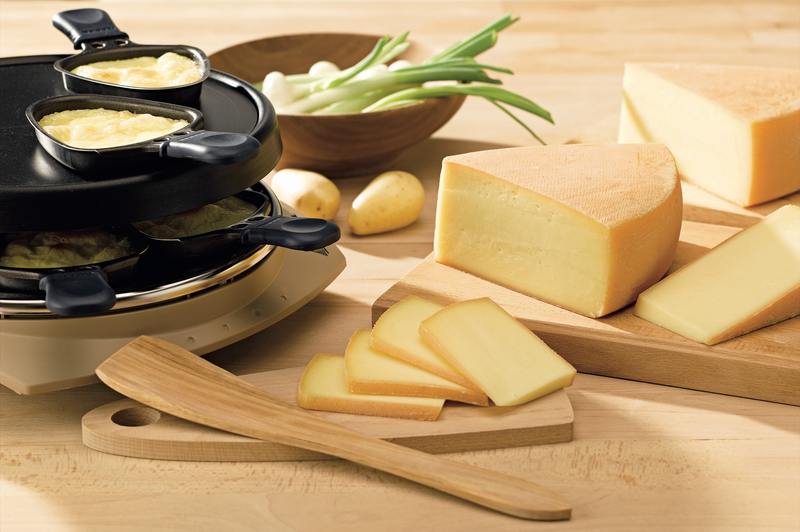The answer to the question on which cheese grows mold the fastest is semi-soft cheeses. They only take up to two weeks to mold.
Besides the molding period, this article will take you into the cheesemaking process and the types of mold used in cheese. Be sure to read until the end!

Importance Of Mold In Cheesemaking
Cheesemaking is a tedious process and requires expertise, like other forms of food production. You’ll find out more about this craft as you read this article.
Cheese mold
You are likely aware of what mold is and that there are two kinds. The first is the one you find in your home, the unwanted fuzzy colored growth on your house’s surfaces.
If you suspect unwanted mold in your home and do not know where to look first, here’s an article about detecting mold behind walls.
The second type of mold is the one that is safe to eat. The healthy kind of mold is used in the cheesemaking process.
How is mold used in the cheesemaking process?
Cheeses use molds as an additive to produce distinct flavors. The appearance and texture are also partially due to the mold used during the cheesemaking process.
Molds Used In Cheese
We’ve established that mold is used in the cheesemaking process. This part of the article will detail the types of mold used in cheeses.
External-ripened vs. internal-ripened cheeses
Molds used in cheeses can either be externally ripened or internally ripened. Externally-ripened cheeses thrive in a humid environment.
The mold used for these cheeses is left to form outside, creating a white bloomy crust. The mold grows from the outside of the cheese to the inside, making a taste specific to externally-ripened cheeses.
Internally-ripened cheeses, on the other hand, require piercing. Piercing allows mold to grow from the inside of the cheese onto the outside.
Some examples of internally-ripened cheeses are washed-rind cheeses and blue cheese.
Do experts use only one type of mold in making cheese?
Cheesemakers use different types of mold for various kinds of cheeses. Here are some of them:
1. Penicillium candidum neige
This type of cheese mold is used to produce the white bloom on the crust of externally-ripened cheeses. The strain “Neige” helps in breaking down the curd and supports a slow maturation period.
2. Geotrichum candidum
This mold is used in cheesemaking as well as traditionally fermented kinds of milk. Geotrichum candidum is usually used in acid-coagulated, mold-ripened, and smear-ripened cheeses.
An example of cheeses that use this type of mold is camembert. Camembert is known for its soft and creamy texture, which Geotrichum candidum takes part in making.
3. Penicillium roqueforti
Penicillium roqueforti is used to start the creation of blue-veined cheeses. The produced enzymes (lipolytic and proteolytic) of the fungus take part in the cheese ripening and flavor production of the cheese.
There are five different strains under this cheese mold, resulting in various types of blue cheese.
Types Of Cheese
There are three types of cheese, and among them, semi-soft cheeses mold the fastest. They only need about two to three weeks to mold.
Semi-firm cheeses need five weeks, sometimes more. Meanwhile, hard cheeses can take up to ten months before they ripen.
Note that the rate of mold growth is due to moisture content and pH level. Cheeses with higher moisture levels have faster mold growth.
On the other hand, those with high pH levels resist mold growth, hence taking longer. All in all, higher-moisture and softer cheeses grow mold the fastest.
In any case, despite mold being used in cheesemaking, it isn’t always welcome. Look into this article to determine why cheeses mold or go bad and if they’re still safe to eat.
Semi-soft cheeses
Semi-soft cheeses have a rubbery outer texture with a soft center. They are denser and a bit more intense tasting than soft cheeses.
They have different rinds. Some have a supple, orange rind that varies; they can be thin and sticky or leathery and coarse.
An example of cheese with an orange rind is Muenster. It is best eaten with dried fruits.
Semi-firm cheeses
Semi-firm cheeses have more developed notes as a result of their aging process. They are better prepared sliced and shredded rather than grated.
Some examples of semi-firm cheeses are Cheddar, Emmental, and Gouda. Cheddar’s texture is on the crumbly side and has a sharp umami taste.
Meanwhile, Emmental’s texture is velvety and has a slightly sharp buttery taste. Lastly, Gouda is a bit crunchy and has notes of intense caramel flavor.
Hard cheeses
Hard cheeses have a dry texture which makes them perfect for grating. Despite the lack of meltability of hard cheeses, their incomparable deep and savory flavor makes up for it.
Since they lack moisture, they mold the longest. Some examples of hard cheeses are Asiago D’Allevo and Parmesan.
Asiago D’Allevo has milky and savory notes, while Parmesan has slightly floral ones. The former is a perfect pair with sourdough, while the latter is ideal with prosciutto.
Conclusion
Now that you know which cheese grows mold the fastest, you also get to peek at the cheesemaking process’s complexity. Hopefully, this article about cheeses helped you appreciate them more.
